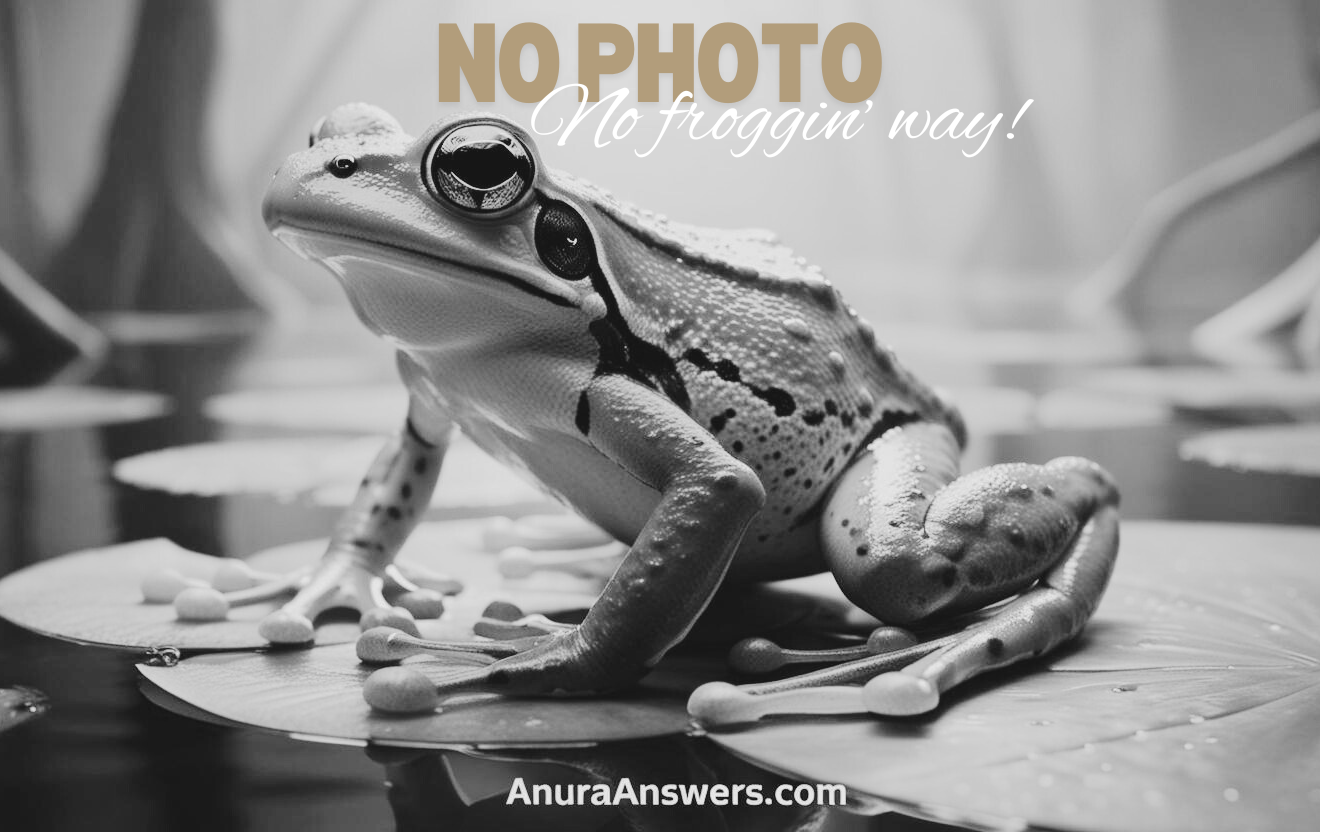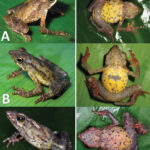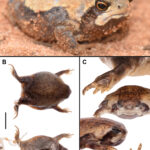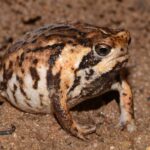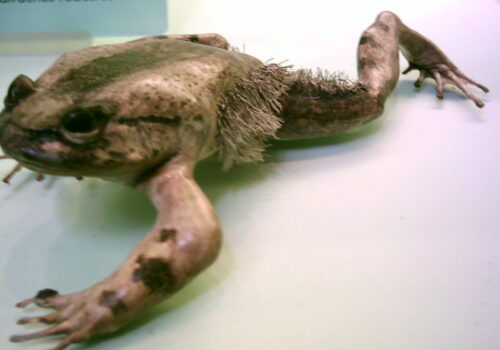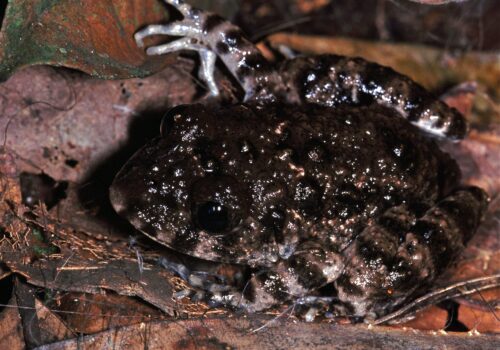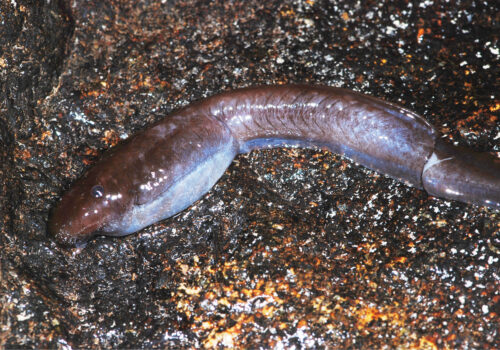- Wonder of Bioko: Discovering the Fascinating Arthroleptis bioko Frog
- Introduction: A Hidden Treasure in the Rainforest
- Taxonomy and Classification: Understanding Arthroleptis bioko
- Natural Habitat: The Dense Rainforests of Bioko Island
- Physical Characteristics: Brilliant Adaptations for Survival
- Behavior and Life Cycle: From Egg to Adult
- Ecological Role: Small Frog, Big Impact
- Threats and Conservation Status: Protecting Bioko’s Jewel
- Cultural and Scientific Significance: An Indicator of Ecological Health
- Conclusion: Preserving the Legacy of Arthroleptis bioko
Wonder of Bioko: Discovering the Fascinating Arthroleptis bioko Frog#
Introduction: A Hidden Treasure in the Rainforest#
Deep within the lush rainforests of Bioko Island—a volcanic gem off Equatorial Guinea’s coast—resides an amphibian whose secretive nature belies its ecological significance: the Bioko squeaker frog (Arthroleptis bioko). As sunlight filters through dense ebony leaves, and humidity hovers gently above fern-covered grounds, this diminutive frog emerges quietly after rains, its soft yet characteristic vocalizations blending seamlessly into nature’s symphony. Named both for its homeland and its distinctive calling sounds, this small amphibian epitomizes nature’s subtle beauty and evolutionary marvels on one of Africa’s most biodiverse islands.
Though inconspicuous among the island’s vibrant wildlife, Arthroleptis bioko is a critical inhabitant underscoring the delicate balance of Bioko Island’s ecosystem. Its very existence is intertwined with rainforest health, affecting everything from insect populations to soil nutrients cycles. Let’s journey into the rich world of this modest yet fascinating amphibian—uncovering its place in taxonomy, exploring the lush habitat it calls home, observing its intriguing behavior, and understanding its conservation needs.
Taxonomy and Classification: Understanding Arthroleptis bioko#
Arthroleptis bioko belongs to the family Arthroleptidae, a lineage renowned for terrestrial frogs scattered primarily throughout Central and West Africa. Arthroleptidae is known colloquially as “squeaker frogs,” a name beautifully indicative of the soft chirping calls many species produce. Within the genus Arthroleptis, our featured amphibian shares close evolutionary ties with various other diminutive frogs adapted especially to life among leaf litter.
The formal recognition of this frog as a distinct species occurred relatively recently, underlining the mysteries still awaiting discovery within Africa’s dense rainforests. Due to subtle morphological traits and cryptic behavior patterns, scientists rely heavily on specific vocalization and genetic analyses to distinguish the Arthroleptis bioko from its close relatives. Understanding this genus is crucial—it highlights fascinating adaptive radiation, evolutionary changes driven by rainforest dynamics, and the fragility inherent in highly specialized ecosystems.
Natural Habitat: The Dense Rainforests of Bioko Island#
Situated off the coast of Cameroon and belonging politically to Equatorial Guinea, Bioko Island’s tropical rainforests remain one of Africa’s few pristine biodiversity hotspots. Here, amongst towering mahoganies and sprawling fig trees, the Arthroleptis bioko thrives, hidden yet flourishing in the dense understory teeming with life. These forests offer a humid and shaded microclimate essential to its survival—steady moisture, leaf-littered ground, and rich organic soil layers delivering both shelter and sustenance.
The frog’s preferred habitats are undeniably micro niches—small, humid pockets beneath logs, within decaying leaf matter, or beside small rainforest streams and swamps. Such microhabitats not only offer protection from potential predators, but also an abundance of food sources tailored perfectly to its feeding preferences.
Interaction with Habitat#
The subtle yet profound ecological impacts that Arthroleptis bioko has on its environment are remarkable. By consuming insects and other small invertebrates, the frog manages pest populations and contributes to nutrient cycling essential to rainforest fertility. Furthermore, when undisturbed and thriving, this species serves as a bioindicator, signaling a balanced ecosystem with minimal human disturbance.
Physical Characteristics: Brilliant Adaptations for Survival#
Arthroleptis bioko is a small, unobtrusive amphibian, typically measuring no more than a few centimeters in length. At first glance, these frogs might seem unassuming compared to their brightly colored tropical counterparts; however, upon closer inspection, their delicate coloration and intricate skin patterned details become apparent. Typically colored in earthy browns, subdued greens, and hints of mottled gray, this coloration provides impeccable camouflage against the forest floor litter.
Their tiny limbs and agile bodies enable swift movements through leaf litter trails, evading predators and effectively stalking their small insect prey. Their eyes—large relative to their tiny frames—are attuned exquisitely to low-light conditions of their preferred microhabitats, enabling efficient hunting even beneath thick canopy shade or during dim rainy twilight. Remarkably adept in this dim environment, these adaptations collectively underscore nature’s intricate design of matching form perfectly to function.
Behavior and Life Cycle: From Egg to Adult#
Feeding and Hunting Habits#
Insects and small invertebrates form the staple diet of Arthroleptis bioko. Its diet, featuring ants, termites, small beetles, and occasionally tiny spiders, highlights its role as an essential insect regulator. Hunting primarily at dusk and dawn, the frog utilizes stealth and its excellent camouflage to approach prey, darting forward with impressive speed and accuracy, tongue snapping out in fractions of seconds.
Mating Behaviors and Vocalizations#
One of the more intriguing aspects of Arthroleptis bioko behavior lies in their breeding season vocalizations. During rainy seasons, males produce repetitive “squeaks” to attract females and ward off rivals, creating a mystical chorus echoing softly across the rainforest floor. Subtle transitions in pitch and frequency can differentiate frogs from different microhabitats, reflecting complexities we are only beginning to understand fully.
Unique Breeding and Development#
Uniquely within the genus Arthroleptis, several related species—including potentially A. bioko itself—bypass a fully aquatic larval stage, with embryos developing directly within laid eggs into miniature versions of adults. This adaptation, known as direct development, allows survival even in habitats with limited or temporary water sources, illustrating incredible evolutionary responsiveness to rainforest realities. Understanding precisely how this process plays out in A. bioko remains an exciting avenue of ongoing scientific inquiry.
Ecological Role: Small Frog, Big Impact#
Though minimally conspicuous, the ecological role of Arthroleptis bioko should not be underestimated. As mentioned, it contributes significantly towards controlling insect and arthropod populations, ensuring balance within the rainforest ecosystem. Furthermore, by acting as prey itself within the food web, the frog sustains a chain of predators—including birds, snakes, and larger amphibians—essential to Bioko’s ecosystem vitality. It also aids significantly in nutrient cycling, promoting soil health through its interactions with leaf litter and organic matter.
Threats and Conservation Status: Protecting Bioko’s Jewel#
While precise population measurements of Arthroleptis bioko are scarce, prevailing threats such as deforestation, habitat alteration, and climate-driven shifts in rainfall patterns pose significant concerns. Deforestation persists as a looming, widespread threat, encroaching upon previously untouched forest landscapes for agriculture, logging, and infrastructure expansion.
The International Union for Conservation of Nature (IUCN) periodically evaluates amphibian populations, but detailed listings of this particular frog remain limited. Conservationists agree that habitat preservation on Bioko Island—especially maintaining contiguous rainforest corridors and robust ecosystem protections—is critical.
Cultural and Scientific Significance: An Indicator of Ecological Health#
In some indigenous cultures, frogs symbolize renewal, fertility, and ecological balance—cultural connections that underscore the interdependency between humans and biodiversity. Scientifically, studying sensitive species such as Arthroleptis bioko offers deep insights into ecosystem dynamics, climate resilience, and biodiversity conservation management strategies.
Conclusion: Preserving the Legacy of Arthroleptis bioko#
The quiet existence and ecological importance of the Bioko squeaker frog cannot be overstated. A symbol of rainforest health and evolutionary mystery, protecting Arthroleptis bioko also protects countless other species sharing its delicate ecosystem. Supporting conservation efforts on Bioko, promoting sustainable practices, and deepening our collective understanding and appreciation of such remarkable small creatures represents conservation in action at its most fundamental and profound.
